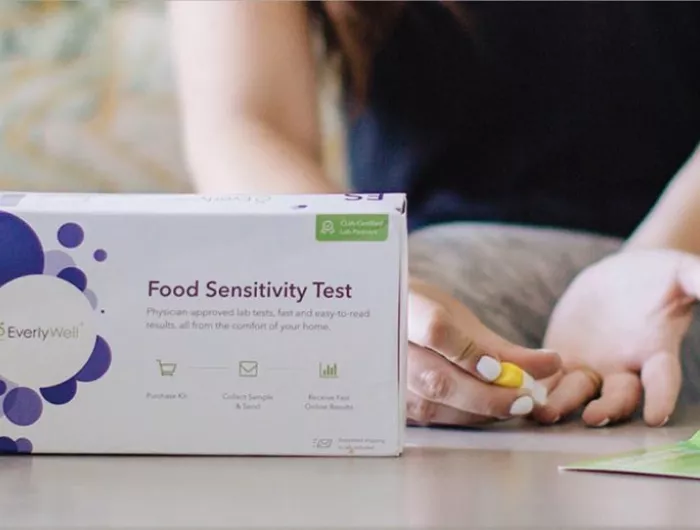Can a test diagnose a food sensitivity?

“Do you ever feel like you may have certain symptoms related to foods, such as headaches, stomach pain, or diarrhea?” asks EverlyWell, a company that sells dozens of at-home health tests online. “Our Food Sensitivity test measures your body’s IgG immune response to 96 foods that are commonly found in western diets.”
The problem with IgG
“IgG has never been validated as a test for diagnosing food intolerance,” says Christina Ciaccio, physician and interim chief of allergy and immunology at the University of Chicago Medical Center.
High levels of IgG (an antibody made by the immune system) may simply mean that you were exposed to a food. In fact, some research suggests that high IgG may mean that you can eat the food with no harm.
“When patients bring in IgG test results, I quiz them about what they eat a lot of, and it’s often exactly what the test says they’re intolerant to, even though they’ve never had a reaction to those foods,” says Ciaccio. “Just because your immune system recognizes a food doesn’t mean that you’re reacting to it.”
The test results can hurt people if it leads them to cut out too many foods. “We’ve had to put in I.V. feeds for patients who became overly restrictive and malnourished after following non-validated test results,” says Ciaccio.
Just what is a food intolerance or sensitivity?
“I dump any adverse reaction to food that isn’t due to an immune response into the food intolerance category,” says Ciaccio.
Some intolerances, like to lactose (a sugar in milk), can cause gastrointestinal distress. Sulfites in dried fruit and wine can cause life-threatening asthma-like symptoms. Histamine intolerance—linked to some fish and fermented or cured foods like cheese and wine—may lead to nausea, headaches, or flushing. In theory, any food could trigger an adverse reaction.
There’s no easy or reliable way to diagnose food intolerances. “There’s no blood or skin test we can do,” says Ciaccio. Your best bet is to try an elimination diet. Cut out all suspect foods for a couple of weeks, then re-introduce them one by one. If you suspect just one food, it’s easier. (A registered dietitian can help you plan and follow an elimination diet.)
“If you think that dairy is giving you reflux, pull dairy out of your diet for a couple of weeks and see if your reflux gets better,” suggests Ciaccio. “If it doesn’t budge, put dairy back in.”
More on food allergies & sensitivities
The Teal Pumpkin Project: Have an allergen-free Halloween
Healthy Kids

Consumer groups concerned by Bimbo Bakeries' response to FDA warning letter
Food Labeling

Back to school: Allergen-free snacks for the whole class
Healthy Kids

Have a food allergy? What to know about FDA's new guidance
Food Labeling

Sesame allergy: Food manufacturing shortcut creates new risks
Food Labeling


